When you think of Argentina, a few classic scenes probably come to mind: tango dancing in Buenos Aires, marveling at the waterfalls in Iguazu or trekking in Patagonia.
If you want to get off the tourist trail, head to the rural northwest. The provinces of Salta, Tucuman and Jujuy are far less touristy and more affordable than the rest of Argentina and there are enough attractions to fill a one, two or even three week visit. From salt flats to vineyards, you won’t be wanting for activities.
We spent two weeks road-tripping through the Argentine northwest; scroll down for our 7 favorite attractions in this diverse region. Accessible by overnight bus from Buenos Aires and located near the Chilean border, Salta, Tucuman and Jujuy should be mandatory stops on any Argentine vacation.
>> If you’ve visited northwest Argentina, please share your tips by leaving a comment below!
1) Argentina’s up-and-coming wine destination – Cafayate
We enjoyed visiting Mendoza, known as Argentina’s “wine country,” but for a less commercial experience you should visit the more northerly town of Cafayate.
Cafayate has just as many nice wineries but far fewer tourists. In addition, the wine tours we came across were for the most part free, and more well-organized than the sometimes pricey Mendoza tours.
And if you have a sweet tooth, try out the unique wine ice cream! They have both white- and red-wine ice cream to choose from.
2) The cradle of Argentine Independence – Tucuman
The city of San Miguel de Tucumán– and the surrounding hillside– is a great place to spend a day or two.
This bustling city is Argentina’s fifth largest and boasts fine architecture like the Casa Historica, where Argentine independence was declared. Make sure to stop by at night, when the entire structure is illuminated.
Tucuman’s outskirts abound with day trip possibilities. Just a short drive from the city center you’ll find lush green mountains and short hikes to streams and ponds.
Monuments dot the landscape and make for excellent photo ops.
Also along the road are a variety of (very random) landmarks you can stop and check out.
3) Relaxation and stunning views in Tafi del Valle
Located about 65 miles from the city of Tucuman, this sleepy town is a world away from the urban bustle. Getting to Tafi del Valle is half of the fun; you’ll spot amazing scenery from the winding roads leading into town.
Tafi de Valle has an arid climate, similar to what you might find in the US states of Arizona or Utah.
Unlike the lush, green hills around Tucuman, Tafi del Valle resembles a desert. The dusty tan landscape is interrupted by several large inland lakes scattered between the mountains.
There are several easy hikes that originate in town, are free, and offer stunning views.
When entering Tafi Del Valle, you’ll need to get used to seeing giant statues of Jesus on the cross– they are everywhere in northwestern Argentina! Tafi del Valle is actually a popular Holy Week destination known for its Passion of the Christ reenactment.
4) The Quilmes ruins
Ruins are all that remain of a massive city created by the indigenous Quilmes tribe. This series of stone dwellings was built after the Quilmes were relocated by the Spanish to Tucuman province in the 17th century.
Today the remains consist of the frames of several hundred structures built up and along the hillside. We spent a few hours exploring the ruins, which combine an easy, uphill hike with the excitement of an archeological site.
When we visited there were no fenced-off areas, security guards or warning signs, although we tried to be respectful of the site. There are plenty of photo ups here, from crumbling walls to llamas that roam the grounds.
5) The Martian landscape of Salta
Driving north from Tucuman province, the landscape changes again near the large northern city of Salta. Red sandstone formations and a glistening river cut through the valley.
This was among the most spectacular scenery we’ve seen in South America and it reminded us of the Australian Outback.
You don’t have too leave your car to take in this scenery, since it sits right off the highway connecting Tucuman and Salta. We pulled over several times to snap photos and to explore lookout points and canyons along the way.
A note of caution: be careful when driving within the city of Salta, which has the most confusing (and dangerous) intersections I’ve seen. Nobody seems to have the right of way, which results in complete chaos as aggressive drivers force their way through. (Check out my previous post on driving overseas for tips).
6) The seven-colored mountain – Purmamarca
Jujuy province is at the furthest northwest in Argentina and more closely resembles its neighbors, Chile and Bolivia, than Buenos Aires. This region is home to the famous Seven-Colored Mountain (“Cerro de los Siete Colores”).
Many of the mountains in northwestern Argentina have striking hues, but only this one has seven distinct colors that run in layers from the base to the tip.
Yet another sleepy town, Purmamarca has a surprisingly developed tourism industry including family-run hostels and restaurants. However, lack of signage still makes it a bit confusing to get around town. The first time we passed through we could not find the famous seven-colored mountain!
Budget travelers can hike around the mountains for free; many trails start near the city center. As in much of the Argentine northwest, the Purmamarca trails are refreshingly free of crowds and offer amazing views.
7) Massive salt flats in Jujuy
Right before the major border crossing into Chile, near the city of Jujuy, is a vast white expanse made entirely of salt.
These salt flats, known as Salinas Grandes, are accessible via a paved highway and should be a mandatory stop on any northwest Argentina road trip.
It’s hard to believe this vast, white plateau located about 13,000 feet above sea level is made of salt and not snow. We spent about an hour touching, crunching, licking and photographing the salt formations.
The salt forms a pattern of six-sided hexagons with raised edges. Occasionally the flats are interrupted by crystal-blue pools of water which are, predictably, salty.
It’s not necessary to book an excursion to see the Salinas Grandes salt flats; in fact, they couldn’t be easier to visit on your own. You only need a car and a camera to document the surreal landscape.
Have you visited northern Argentina?
Share your travel tips with other readers by leaving a comment below! If you are reading this post via email or RSS feed, make sure to click on DowntownTraveler.com to leave your comment.
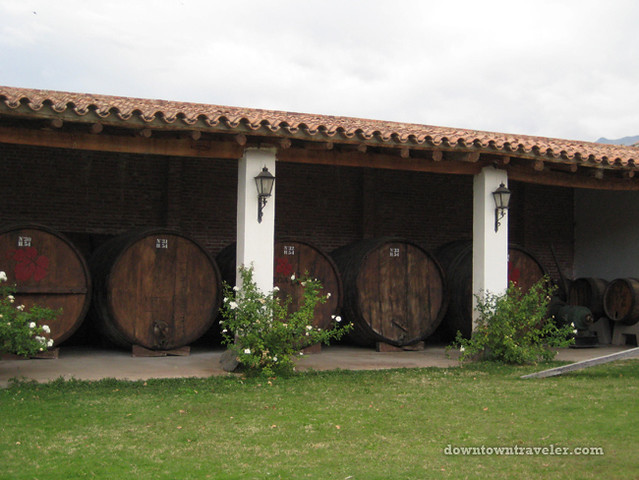

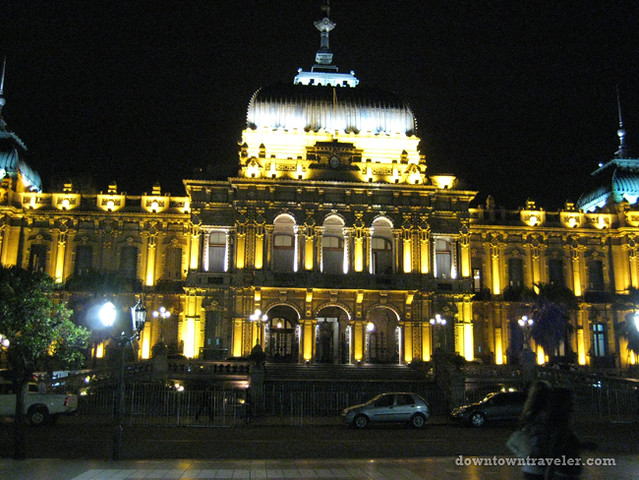

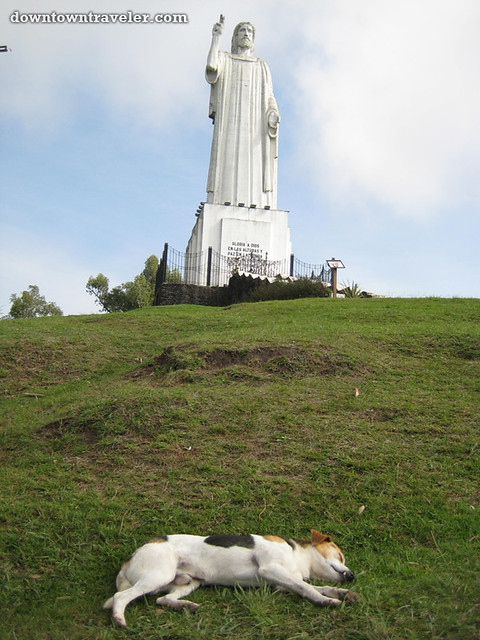
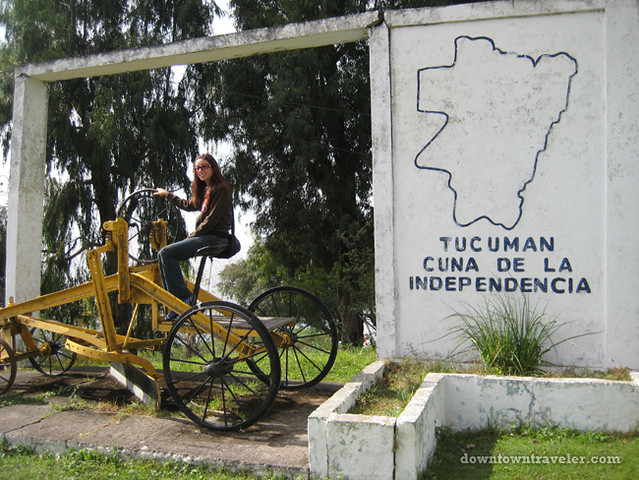
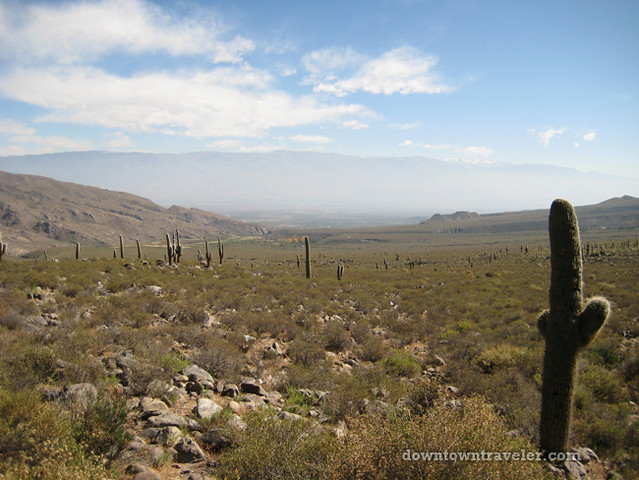

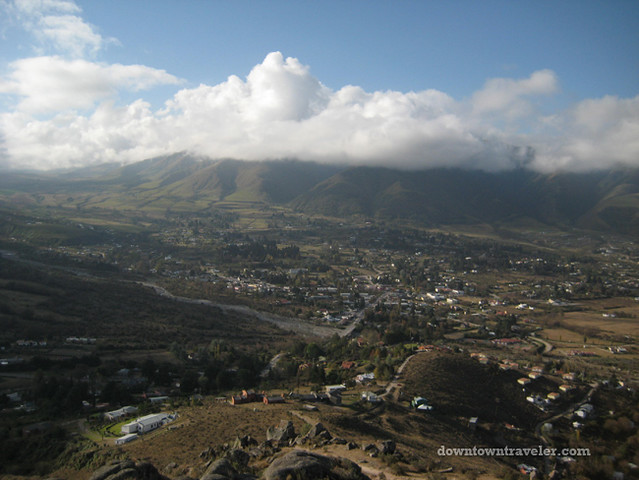

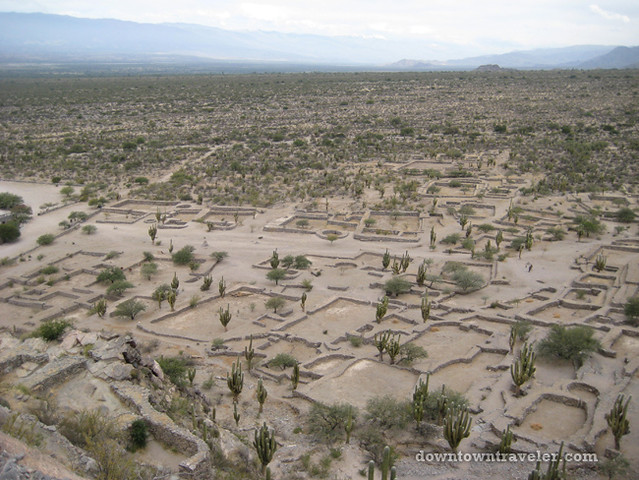
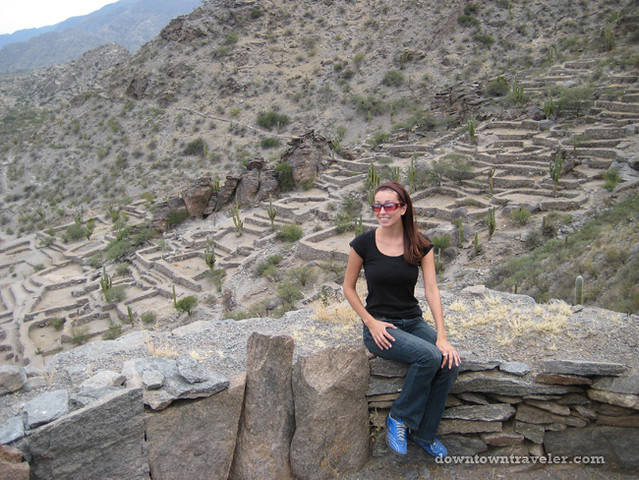

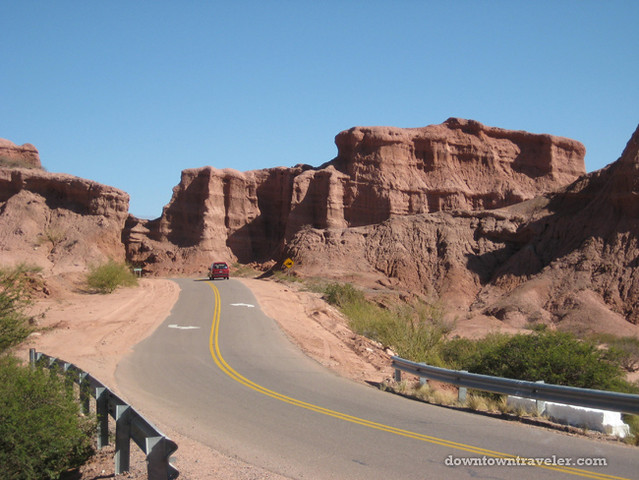
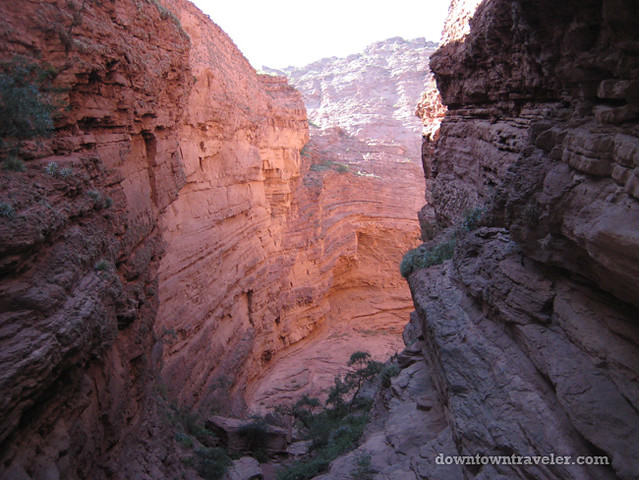

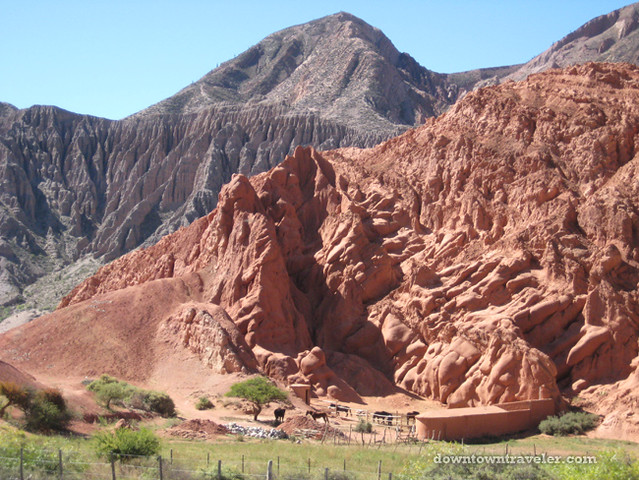
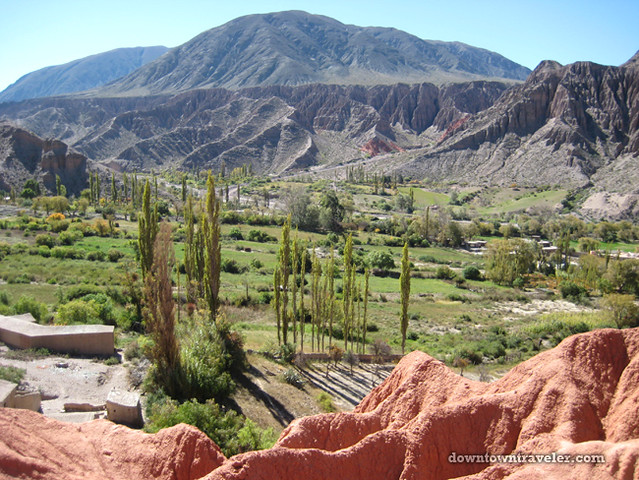


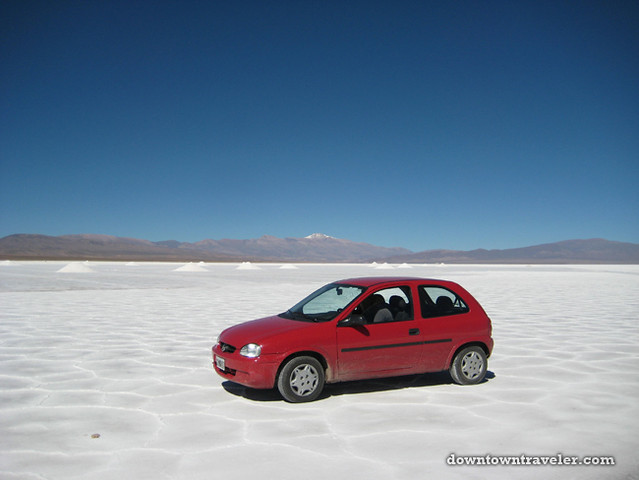


















I saw seven colored tea but seven colored mountain?Honestly this is out of my imagination! Thanks for such an informative post.
I have never been to northern Argentina and actually, because of your post, it makes me think to save more this year and get to that place next year to come…
Hi Jake,
Very nice pictures of Argentina. Really loved them. Which camera do you use?
How awesome is the Nikon D5100?
You always have the most amazing photos (love the one of your car on the ground of salt). Beautiful!
Thanks! These destinations are so amazing, it’s easy to get a great shot 🙂
Hope to visit the Salta and Jujuy in Argentina. The picture looks beautiful, and I really like it. Perfect.
The white sand looks like a cloud. I found Tucuman Salta a great place for vacation. Thanks for posting.
Really nice article, it is beautiful. Thank you
I think I wanna visit Argentina. I like the picture you’ve posted. Lots of beautiful places to go through. Thanks for sharing.
We loved pretty Salta but didn’t have a chance to visit places like Cafayate and Tucuman. I would have loved to more of the try the wine in the former – we had one in a Salta restaurant and it was delicious!
Definitely make it to Cafayate at some point! It’s a quaint, sleepy town filled with bodegas (wineries). We stayed at a family run B+B and had such a relaxing experience 🙂
I wish we had more money and more time to explore Argentina. LOVED Salta and the southwesterny environment it had. Reminded me of parts of Arizona. <3
Totally! Parts of Salta also looked like the Australian Outback or southern Utah. A very serene landscape 🙂 It was fun spending a couple weeks road tripping through the area– it’s definitely off the tourist trail!
I hear so many good things about Argentina. I am definitely going to have to go there one day.
Definitely visit Argentina– especially the less-traveled north, Iguazu falls and of course Buenos Aires. There is so much to see 🙂
Beautiful photos. Did did you do to the dog? It looks exhausted 🙂 I love the shot of The cradle of Argentine Independence (Tucuman), looks amazing at night!
Hi!
I am a student studying in Buenos Aires. My friends and I are taking a road trip to the Northern Part of argentina and I was wondering if you could send me the route you guys took when you traveled. I loved this blog and want to see some of the places you guys visited!
Hi!
I am a student studying in Buenos Aires. My friends and I are taking a road trip to the Northern Part of argentina and I was wondering if you could send me the route you guys took when you traveled. I loved this blog and want to see some of the places you guys visited!
When i would like we had a higher price and even more time for you to discover Argentina. ADORED Salta along with the southwestern environment the idea acquired. Reminded me connected with areas of Az — Notice far more.